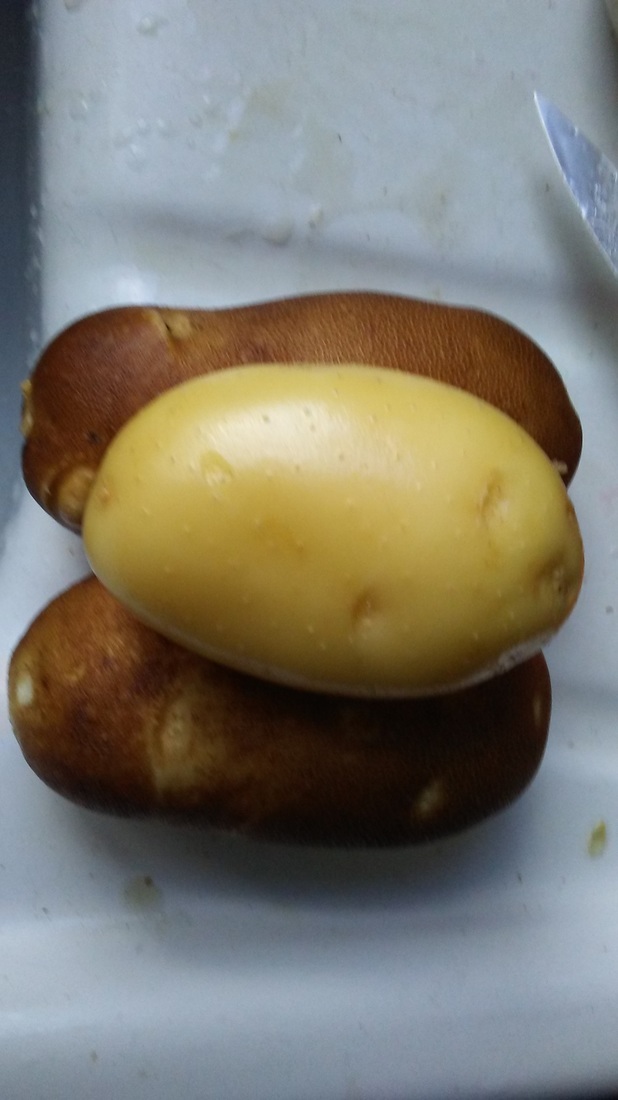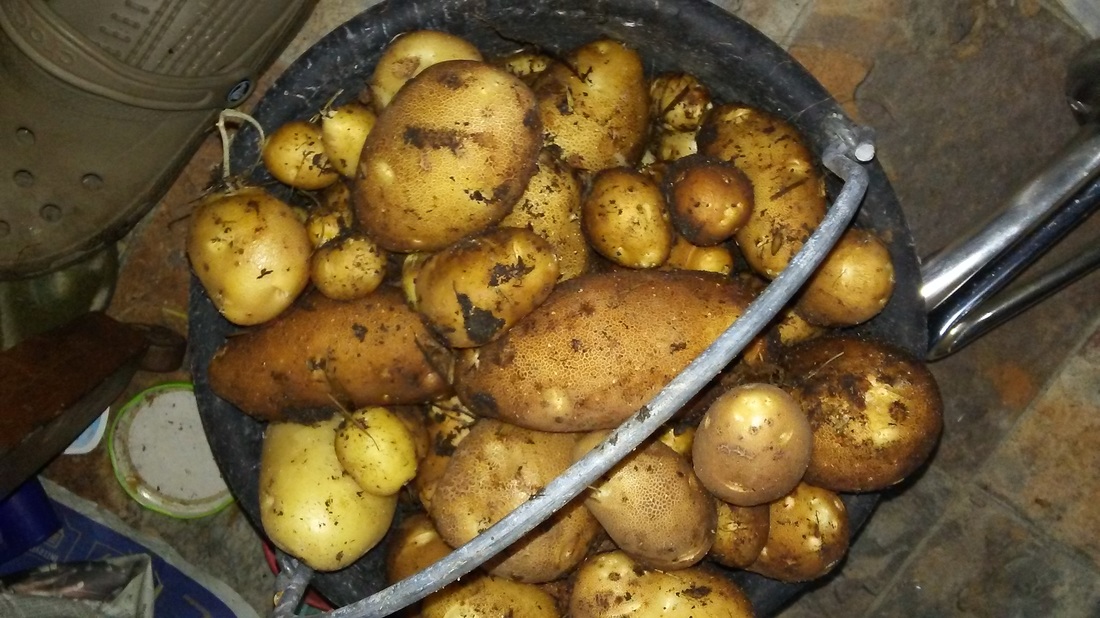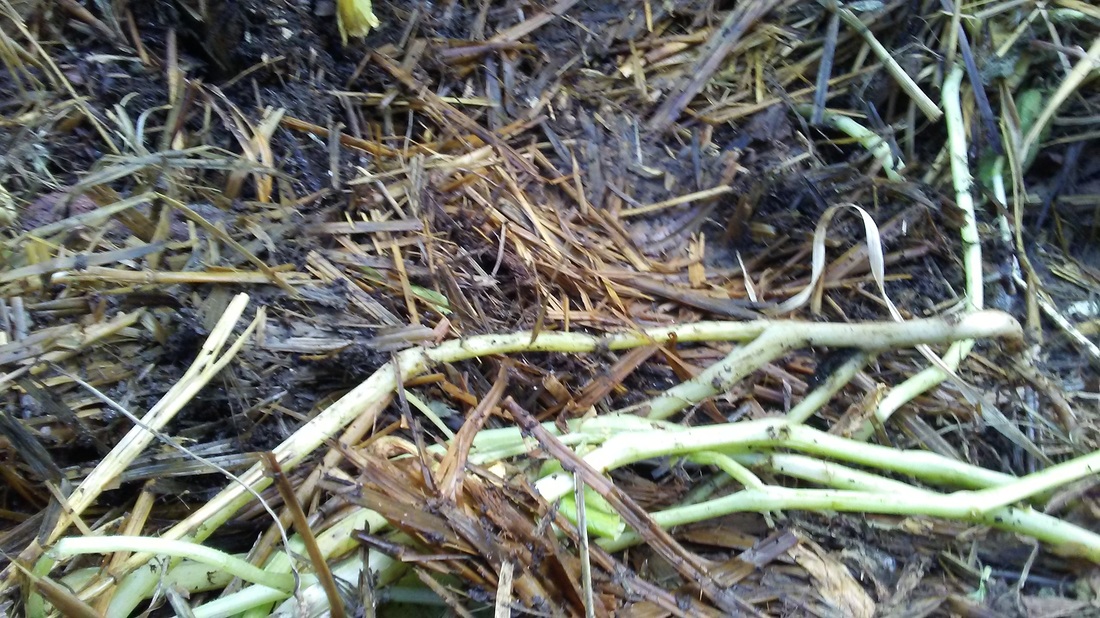In traditional gardening the soil is tilled and weeded and then potatoes are planted in holes in the ground at least 4 inches deep or more. They are covered with soil and as the potatoes grow they push the soil upward and some will become exposed. Then 'hilling' the potatoes is required, which is to collect more soil surrounding the potato plant and hill it over the top. Potatoes exposed to sunlight become green and produce a chemical that makes the tubers inedible.
But that is not how nature grows anything. Tilling is never done, nor is digging. The acorn falls on the ground and if it is fortunate, leaves will cover it and provide some microclimate that keeps moisture in. The potatoes do the same thing. The plant will produce seeds in a long enough growing season, which will fall to the ground, survive the winter and grow the next spring. We can mimic nature with potatoes too.
First select a sunny location or at least half day sunny spot. If there are weeds or grass there, simply lay down two layers of cardboard first. Place the potatoes on the cardboard and cover them with at least a foot of straw. The potato patch must then be kept watered. A miracle happens. Potatoes grow! They will send roots down through the cardboard as it deteriorates gleaning nutrients from the soil. No hilling or weeding will be required thereafter. Once the plants have withered, the potatoes can be harvested simply by moving the now composted straw out of the way.
This year I had some left over small potatoes from last year. In the area that I use as a compost, I put down some straw first, then strew the potatoes around over it and added another foot of straw over the top. Thus, kept watered, beautiful, clean potatoes were produced. In one area I did put down cardboard instead of straw because it was full of long grass and this also produced wonderful potatoes.
It is a common thought that too rich of soil will cause potato scab, an unsightly though absolutely harmless potato disease. There could not be much richer an area than a compost pile, but grown in the straw method, no scab was evident. The potatoes require little in the way of washing as well. There had been a lot of rain this summer, so watering was not even necessary. When potatoes are too wet they can crack, but these were very wet and there is no cracking. Perhaps those ideas of too rich and too wet need to be challenged?
Anyhow, the potato harvest is perfect from the straw patches. I planted some in the ground in another area and they are scabby, but then they are also a different variety. These are Russet and Yukon Gold originally from the organic section of the grocery store.
I do encourage you to try growing potatoes in straw next season. It is so easy and yum! the potatoes taste amazing.




 RSS Feed
RSS Feed